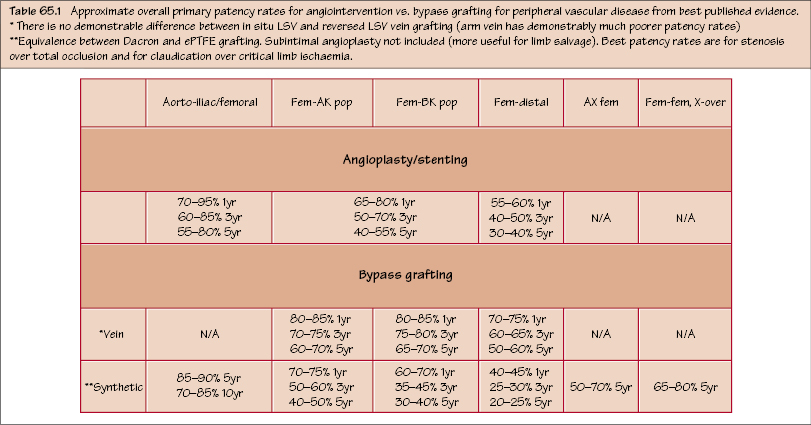High-Yield Vascular Facts

Risk Factors and Best Medical Therapy
- The risk of PVD increases with age.
- Claudicants who smoke have 1.5–3 times the mortality of those who do not. Those who stop smoking will decrease this risk to that of non-smokers over 2–4 years.
- Nicotine replacement therapy doubles the success rate of smoking cessation at 1 year compared with placebo.
- Diabetes has a 2–4 fold increased risk of PVD with a 10–16 fold increase in the risk of limb amputation compared with non-diabetics.
- For every 1% increase in HbA1c levels, there is an almost 30% increased risk of the development of PVD.
- For every 10 mmHg decrease in systolic BP treatment, there is a 12% decreased risk in cardiovascular morbidity and 16% decrease in PVD-related morbidity.
- Even with a modest decrease in BP (10/5 decrease), there is a decrease in:
- stroke mortality: 40%.
- ischaemic heart disease (IHD): 16%.
- all cardiovascular (CVS) mortality: 30%.
- peripheral vascular events: 26%.
- stroke mortality: 40%.
- A fasting cholesterol >7 mmol/L is associated with a doubling of the PVD risk.
- There is a reduction in CVS death or non-fatal MI by up to 50% in patients treated with statin therapy.
- Treatment with statin therapy has been shown to reduce fatal and non-fatal IHD and stroke events by 30–40%.
- The use of an antiplatelet agent reduces the risk of serious vascular events by almost 25%.
- β-blockade appears to reduce peri-operative MI in high-risk vascular patients undergoing major vascular surgery.
Abdominal Aortic Aneurysm
- Focal dilatation of an artery with a diameter increase ≥50% than its non-dilated segment (male ≥3 cm, female ≥2.5 cm).
- Affects 7–8% of men >65 years in the UK; 15–25% of males (6% females) with AAA display familial ‘clustering’.
- Three to five times more common in the Caucasian population compared with Afro-Caribbean. Indications for repair:
- Symptomatic/rupture.
- ≥5.5 cm (rupture risk > surgical mortality [5.8%]).
- Aneurysm growth ≥0.5 cm in 6 months).
- Saccular aneurysm.
- Symptomatic/rupture.
- Five-year risk of rupture:
- 5–5.9 cm: 25%.
- 6–6.9 cm: 35%.
- >7 cm: 75%.

Stay updated, free articles. Join our Telegram channel
- 5–5.9 cm: 25%.

Full access? Get Clinical Tree


